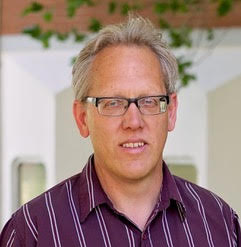Conceptual, Operational and Policy Issues in Servicing Gifted Students in Mexico
Article ID: 2356
DOI: https://doi.org/10.30564/jiep.v3i3.2356
Abstract
This paper reflects upon existing conceptual controversies regarding high ability students in Mexico. A taxonomy of high ability students is proposed with the aim to provide clarity between the categories of talented and gifted students. Differences in services needed in each category are addressed considering implications for teacher training and educational policy. Problems in policies regarding gifted students are analyzed. As a result, arguments on why gifted students should not be classified within the special education services are posited. We argue the importance of independent services for the gifted supported by their own theoretical and methodological framework. Educational policies based upon potential, talent and merit are necessary to foster the human capital of the county. We argue that the effective of screening and intervention of Mexican gifted students is a sound strategy to enhance socioeconomic and scientific development, thus a sound reason to invest in the brilliant minds of our students.
Keywords
Full Text:
 PDF
PDF
References
[1] Becker, 2. p. (2007). Economic arguments for gifted education. Gifted Children, 2(1), 6-9.
[2] Becker, G. S. (2002). https://www.hoover.org/sites/default/files/uploads/documents/0817928928_3.pdf. Obtenido de The Age of Human Capital: https://www.hoover.org/sites/default/files/uploads/documents/0817928928_3.pdf
[3] Camelo, A. (2018). Percepción social del alumno con alto rendimiento académico, Tesis de doctorado. Mérida, México: Universidad Autónoma de Yucatán.
[4] Castanedo, C. (2006). Bases Psicopedagógicas de la Educación Especial Evaluación e Intervención,. Madrid: CCS.
[5] Colangelo, N., Assouline, S., & Gross, M. (2004). A Nation Deveiced. Iowa City IA: The University of Iowa.
[6] Davis, G. (2006). Gifted children and gifted education: a handbook for teachers and parents. Usa: Great Potential Press, Inc.
[7] Florian. (2010). Special education in an era of inclusion: The end of special education or a new beginning. . he Psychology of Education Review, 34(2), 22-29.
[8] Gallaguer, J. (2002). Necesidades Educativas Especiales. Intervención psicoeducativa. E. Madrid, España: CCS.
[9] Labastida, R. (2014). Fantasmas en el aula. Cómo aprovechar el potencial invisible en México: Colegio de Sinaloa. Colegio de Sinaloa.
[10] Lizcano, P., & Sánchez-Escobedo, P. (2016). Personality traits and life experiences influencing highly creative people: six life stories. Journal of Special & Gifted Education, 3(1), 93-108.
[11] Márquez, J. (2010). La individualización de la enseñanza a niños con necesidades educativas especiales, con discapacidad: el caso Chihuahua (Tesis Doctoral). Universidad Popular Autónoma del Estado de Puebla, México.
[12] Ostrom, E., Ahn, T., & Olivares, C. (2003). Una perspectiva del capital social desde las ciencias sociales: capital social y acción colectiva. Revista Mexicana de Sociología, 65(1), 155-233.
[13] Sanchez, P. (2013). Talent Development Around the World. Saarbbrucken, Germany: Lambert.
[14] Sanchez-Escobedo , P., Acle-Tomassini, G., De Agüero, M., Jacobo, Z., & Rivera, A. (2003). Aprendizaje y Desarrollo. CDMX: Consejo Mexicano de Investigacion Educativa.
[15] Sánchez-Escobedo. (2006). Detección y registro de niños de secundaria con capacidades sobresalientes en zonas rurales y suburbanas del estado de Yucatán. Reporte final. Consejo Nacional de Ciencia y Tecnología, Fondos Mixtos.
[16] Tomilson, S. (2008). Race and Education: Poliocy and Politics in Britain. Berkshire: Open University Prress.
[17] Valadez, D., Betancourt, J., & Zavala , A. (2012). Alumnos superdotados y talentosos. Ciudad de Mexico: Manual Moderno.
[18] VanTassel-Baska, J., & Stambaugh, T. (2008). Curriculum and Instructional Considerations in Programs for the Gifted. Handbook of Giftedness in Children Psychoeducational Theory, Research, and Best Practices, 347-366.
[19] Webb, J. G. (2011). Helping Children Learn about the larger World. Gifted Education Communicator, 42(4), 5-6.
Refbacks
- There are currently no refbacks.
 +65 65881289
+65 65881289 contact@bilpublishing.com
contact@bilpublishing.com






